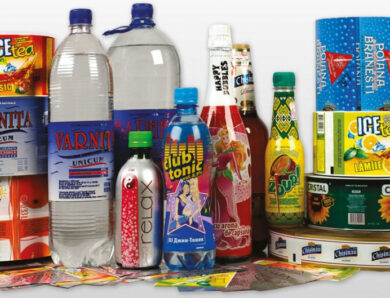Fire hydrant dimensions. Classification. Installation rules
Various extinguishing agents can be used in firefighting. Methods of fire elimination involve the presence of special units - fire hydrants. The main field of application of this equipment is filling of tanks of a large volume of fire engines or connection to a source of flammable liquids of a fire hose of fire extinguishing system.. These devices provide access to groundwater or the water supply network.
Fire hydrants are used to supply water to the place of ignition and to fill the tanks of fire engines with water
Classification
Depending on the device, fire hydrants are of two types. Let's look at each of them in a little more detail.
Fire hydrant underground. It is installed in the well. The arrangement of this equipment involves the location above the ground only the crane. The production of an underground fire hydrant is regulated by the relevant GOSTs. Models differ in shape and, in accordance, in diameter and height. Usually, use equipment of this type at liquid temperature, fluctuating in the range +5 … + 50 ° C. Use such a hydrant, when the thermometer bar drops below zero degrees, impossible. The water pressure should not exceed 10 MPa. Installation of this device, and fire station, should be performed only in a vertical position.
Technological requirements provide for the considered equipment special supports. Before mounting the unit, it must be thoroughly rinsed with well water. Fire hydrant height range - within 500 — 3500 mm with a step 250 mm. Such dimensions ensure the opening of the valve on 24-30 millimeters. Holes are provided in the design of the unit, through which fire hoses are connected.
The underground hydrant is located in the well, only the crane is displayed outside
When using hydrants, a fire line is often created around the perimeter of the well. It consists of numerous plastic pipes or hoses, which are also laid along the perimeter of the strategic object.
Development of detailing of a well from hydrants is carried out by professionals. However, knowing certain requirements for the operation of such equipment, you can build a well yourself. The advice of professionals is formulated as follows:
- it is not necessary to place a well at great depth. If water is supplied from a well, it is not necessary to clean it from impurities. The main thing, do not allow the presence of stones in the water;
- the diameter of the well must be at least 800 mm. Such parameters ensure unobstructed switching on and off of the equipment;
- the well is made of reinforced concrete rings or large diameter plastic pipes. Lower the unit into the excavated area, but the hole has not yet been processed, not recommended. The point is, that if the soil shifts even slightly, the well may fall asleep;
- the value of the greatest distance from the fire hydrant to the building in the case of low-pressure fire water supply shall not exceed 150 meters.
Ground fire hydrant. This is a wellless structure. Therefore, it is more complicated. You can find such a unit in any area. Install it on the ground surface or on a special hatch. A prerequisite is the presence of a water source in the immediate vicinity.
Importantly! In winter, the liquid must be removed from such equipment. Otherwise it will freeze, and it will be impossible to use it.
Such devices are also equipped with additional functionality. Usually, above-ground hydrants are completed with system of release from water or automatic start.
A ground hydrant must be located near a water source; it can be a fire tank
Installation rules
Installation of this equipment is regulated by SNiP 2.04.01-85 and JV 8.13130.2009. Regulatory requirements for the placement of a fire hydrant of any type are formulated as follows:
- the choice of location should be made taking into account the possibility of unobstructed laying of the sleeves;
- the distance to the wall of the building must be at least 5 meters, the distance to the roadway is not more 2,5 meters;
- the distance between fire hydrants should be within 100-150 meters;
- diameter of a pipe of a water supply network, to which the ground hydrant is connected, for a large settlement must be at least 100 millimeters, and in rural areas the value of this parameter is allowed 75 millimeters.
The following factors are taken into account when installing a fire hydrant: the number of floors of the building or the height of the structure, total water consumption, which is estimated to be needed to extinguish the fire, the value of the capacity of this water intake equipment.
Principle of action
Structurally, this device is a diversion, which is installed on a fire support of a water supply or fire network or on a tee. To avoid getting foreign objects into the hydrant barrel, dirt is removed from the surface of the cover before use.
Then the cover of the unit is removed and the fire column is screwed on the nipple thread to the stop.. The hydrant is opened by a smooth counterclockwise turn of the fire column handle. The rotation of the rod causes the valve to move. Usually close enough for this 12-15 revolutions. Through the open channel, water first enters the hydrant barrel, and then to the fire station.
The opening of the hydrant should be smooth, turn the knob clockwise
Upon completion of water extraction, everything is done in reverse order. The hydrant is closed by turning the handle of the fire column clockwise, it is unscrewed and cover the trunk of the unit. Water, the remaining comes out through the available in the lower flange hole by gravity into the well.
Calculation of the number of connections and location
This procedure must be performed taking into account the range of the fire hydrant. The following formula is used to calculate this parameter:
Р = (Pp / 1.2 - For) * v1 — (? V / (Rr / 1,2-Dl) ^ 2 + to all * cos?, Where:
Rr - radius of the allowable length of the fire hose; DL - the minimum required length of the fire hose, taking into account the height of the building; B is the difference between the height of the pumps and the level of the surface near the structure; Kovsemu - the length of a compact section of water jet; ? - the optimal angle of inclination of the bucket.
Calculate the length of the fire hose:
Дл = ВЕ? TO, where:
BE - floor height; K - the number of floors.
This formula is valid only in the case of vertical sleeves. Creeping gasket is different, that in the calculation take triple the height of the building.
If? = 60? WITH, and the car pump and the column are approximately on the same level, then a simplified formula is allowed to determine the range of the hydrant:
P = Pp / 1,2 -Dl + to all / 2
pay attention! Fire hydrants should be placed as follows, that at least water supply to any house of a site was provided 15 liter / sec.
The range of the unit is measured at the peak of water consumption. The same applies to this indicator, as Water drainage.
Requirements for the size of fire hydrants. Specifications
Regardless of the type of execution and method of installation, these units are subject to requirements, as one of the types of firefighting equipment. These requirements regulate strength standards, withstands operating pressure and throughput of the product. Exactly certain dimensions, methods of fastening and installation at the optimal distance of the hydrant to the building - all this allows you to mount such a unit as quickly as possible and use it just as efficiently. The service life of such devices can reach several decades.
The size of the hydrant and its location relative to buildings and structures are important
Requirements for the size and diameter of the fire hydrant are contained in GOST 53961 2010. You can get acquainted with them, having studied the data in the table below.
Table 1
| Name of the characteristic | value | ||
| Inner diameter of the case | 150 | 125 | 100 |
| Hydrant height | 500 … 3500 mm | ||
| The number of revolutions of the rod (barbells) until full opening | 12 … 15 | ||
| Backlash of a spindle on an axis in a support no more | 0,4 mm | ||
| valve stroke | 24 … 30 mm | ||
| Working pressure no more | 10 kgf / m | ||
Dimensions, which characterizes the fire hydrant in a particular design, may change. GUEST 53961 2010 allows this in the case, if the tests confirm the preservation of a sufficient level of water efficiency of the developed model. However, there are restrictions. So, example, the maximum diameter of the unit of any kind should not exceed 300 mm.
Height. This parameter is one of the most important sizes of a fire hydrant. The point is, that in ring and main pipelines of systems of economic and general water supply pipes are most often laid underground. If the requirement for exclusively vertical installation of GHGs, the remoteness of the branch of engineering communication from the surface becomes critical. It follows, that the height of the unit must correspond to the depth of the well. However, the SNIP makes additional demands. The main one is formulated as follows: the dimensions of the well and the dimensions of the fire hydrant must be as follows, to make it possible to install a fire column using a hand tool. And the distance between the lid of the well and the top of the device should be within 150-400 millimeters. At the same time the water intake column should rise above a soil surface not less than on 1 meter.
When building an underground hydrant, the requirements of SNiP should be taken into account, in which the size of a well is regulated
In some cases it is allowed to use GHG, whose height exceeds the maximum specified in the Guest 3500 mm. Therefore, modern industry produces such units with the value of this parameter, equal 4500 mm.
Useful to know! They are used there, where fire equipment must be connected to a deeply laid pipeline.
Weight. This feature is of great importance in terms of ease of installation and logistics. Fire hydrants are made of cast iron or steel grades, allowing long-term contact with the aggressive environment of soils of different types and water. When you do not need to use expensive grades of alloy steel, usually gray iron is used as a raw material. And that means, that the weight of the product will be relatively large. But here GOST determines the maximum values of this characteristic. The basis for the calculation is the weight of GHG height 1000 mm with the maximum allowable value of this indicator 95 kg. When increasing the length of the unit on 250 mm allowed to increase its total mass no more, than on 10 kg.
Using
Proper operation of the fire hydrant requires compliance with the following rules:
- the water main must provide a sufficient amount of water to extinguish the fire;
- during the winter season, measures should be taken to prevent the possibility of hollow on the water intake equipment;
- providing free access to the hydrant;
- the presence of pointers for quick device search;
- norms of the JV 8.13130.2009 require systematic inspections and checks of the readiness of the hydrant to work. The frequency of such events is once every six months, autumn or spring is recommended.
Fire hydrants are subject to periodic inspections and tests to prevent breakdowns
And another important point. It concerns the route of laying fire hoses. In the event of sharp bends, the delivery of extinguishing agent to the fire will not be provided. Also do not lay hose lines on surfaces, flooded with chemicals, fuels and lubricants, as well as on burning or sharp objects. The route of the sleeves in the stairwells should run between the marches, with, without cluttering stairs and aisles. In the yard, on the road, street paving should be carried out if possible not on the roadway, and through tram or railway tracks - between sleepers under rails.
Any leaks in the hose line must be rectified immediately. This is done by installing special clamps. These elements are of two types:
- tape clip. With its help the leak from gaps no more in length is eliminated 3 centimeters or holes to 2 centimeters in diameter;
- corset clip. It is intended for processing of longitudinal breaks, whose length does not exceed 10 centimeters.
In conclusion, I need to say something else: that the fire hydrant worked normally, preventive work should be performed with it, related to checking the speed of water start-up. It is also necessary to test the pressure on a special stand using a pressure gauge with VPI, equal 16 (the abbreviation "VPI" means the Upper Limit of measurements), and measurement accuracy class 1,5. For GOST 15150 the frequency of these activities - at least once every six months.




